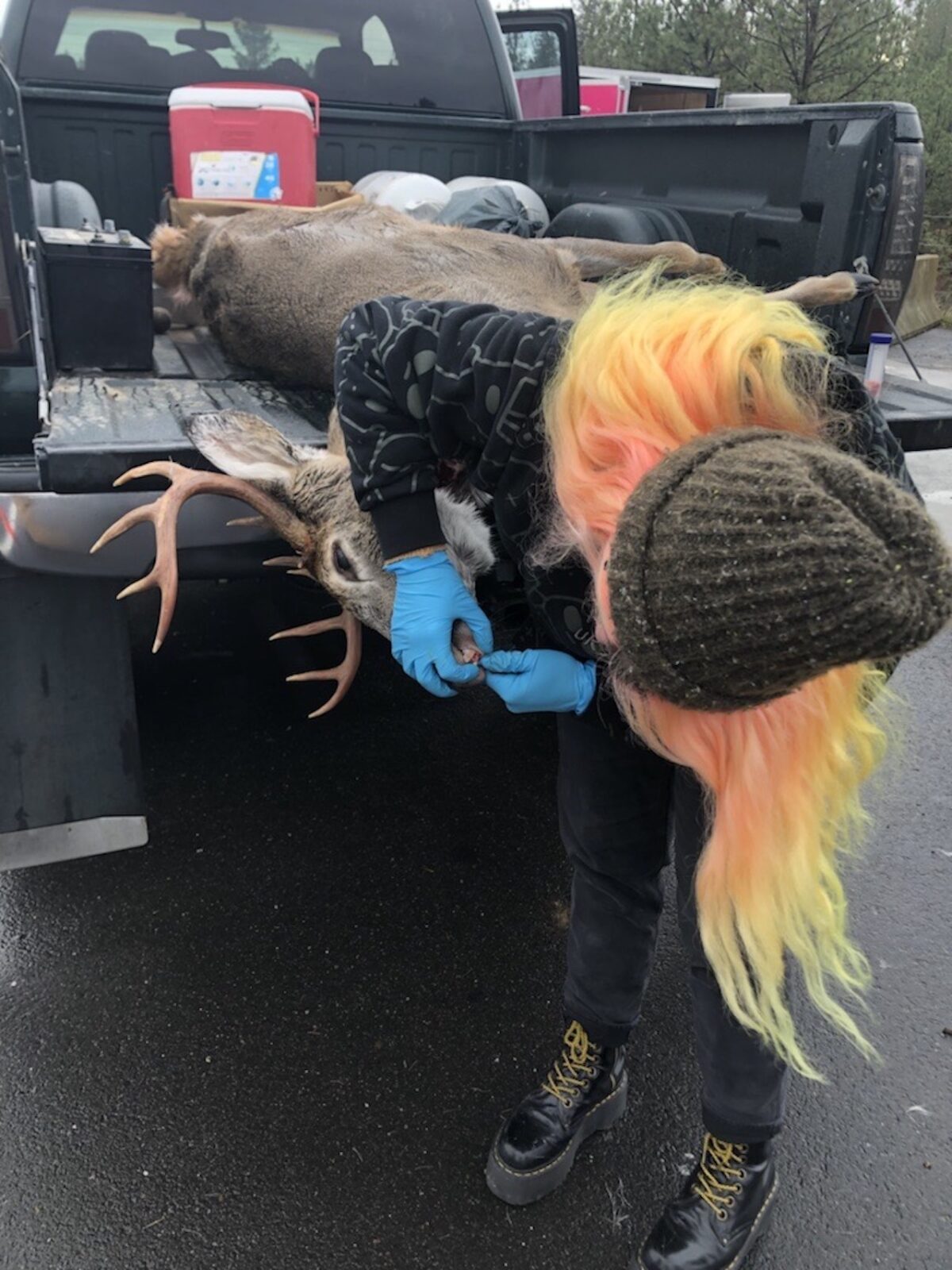
WDFW Sees Increased Traffic At CWD Sampling Stations This Fall
Late rifle whitetail season wrapped up with a bit bigger bang than last year in Northeast Washington, at least in terms of deer sampled at four biological check stations.
WDFW’s Melia DeVivo termed November 18-19 a “record-breaking weekend” for collecting samples for chronic wasting disease testing since enhanced monitoring efforts began in 2021.

“We collected 106 harvested deer samples for testing at four different check station locations. Deer Park, Highway 2 and Creston saw a lot of deer, but Colville was slow again. I think the shift in weather this weekend had deer moving and the rut is definitely in swing now, which made it much more productive for hunters,” the state ungulate research scientist stated.
CWD, an always-fatal condition that strikes deer, elk and moose, has not been found in Washington, but recent outbreaks not far away in Northwest Montana in Libby and in Idaho’s Hells Canyon near Whitebird and just this fall New Meadows have seen WDFW pick up its sampling efforts significantly.
According to agency spokeswoman Staci Lehman, 423 harvested animals have been checked so far this hunting season, and even with a few more deer and elk likely to trickle in before the end of the late archery and muzzleloader hunts, the tally is already well above last year’s 314.
Asked what the agency attributed 2023’s increase to – the whitetail herd bouncing back from 2021’s huge hemorrhagic disease dieoff? better hunting conditions? the incentive of potentially drawing into one of 100 multiseason tags being given away by WDFW and BHA Washington for getting kills tested? or something else? – Lehman said it was “probably a combination of factors.”
“We know it was a good weekend at hunter check stations but can’t say for certain that it was a good weekend for hunters in general because the check stations are voluntary and not everyone stops to get their animal tested,” she said. “We’ll know about that after hunter harvest reports are due on January 31 and that info is analyzed. As for check station traffic, it could be anything from increased outreach this year to more visible signs, weather, or any other number of factors.”
While the manned roadside sampling program is done for the hunting season, hunters who want to have their Region 1 harvests checked can still schedule an appointment at WDFW facilities, with the Inland Northwest Wildlife Council, drop-off locations in Cusick north of Newport, or via mail. See this webpage for more on those options.
